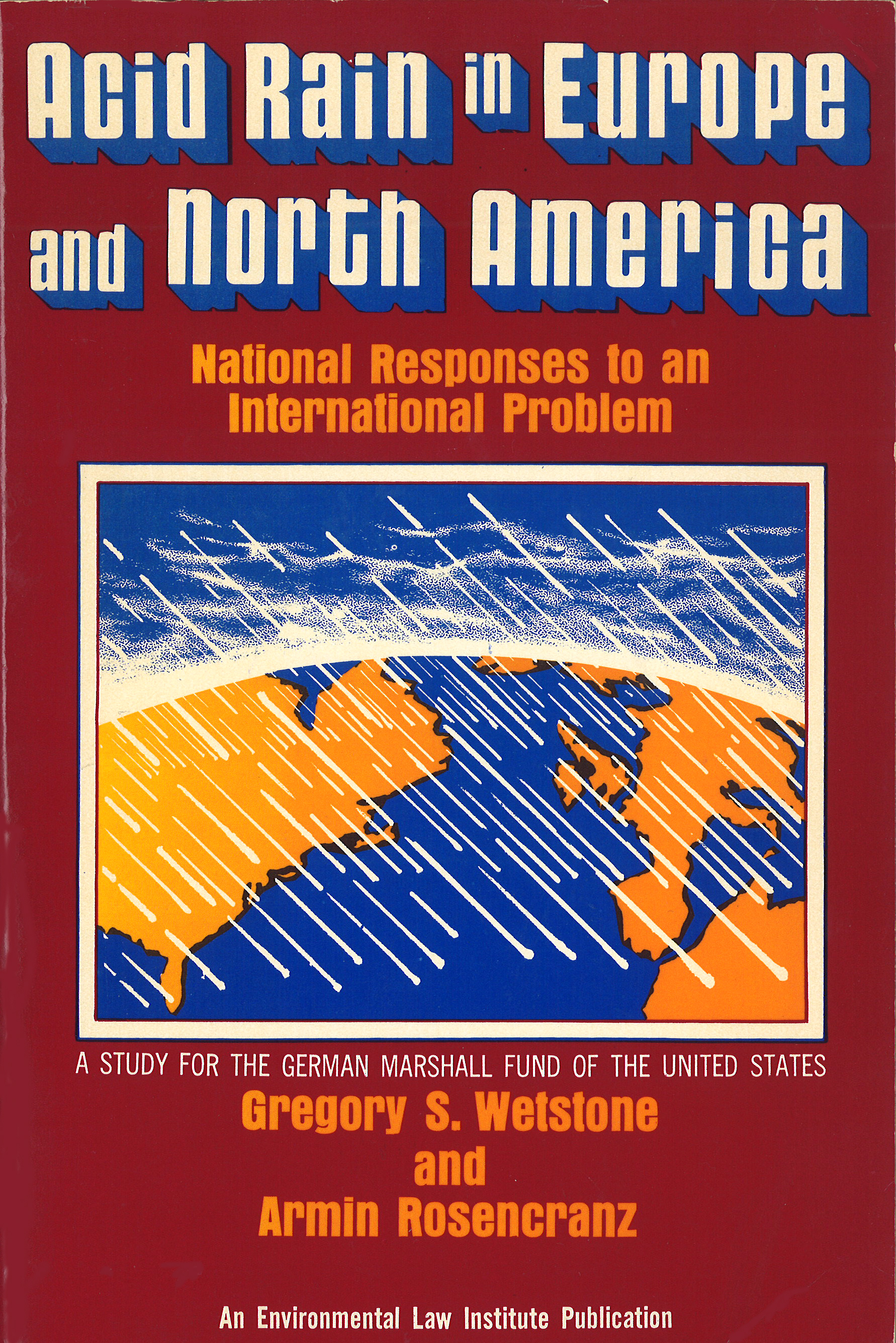Acid Rain: Lessons from Germany’s Black Forest
As prosperity rose, so did pollution. British, German, and Swedish, scientists were among the first to warn that increasing levels of sulfur dioxide emissions from factories led to trees dying. In Germany, a country of old woods, beautiful rivers, and historic monuments, acid rain took a heavy toll on the natural environment. The United States was not spared, either. In the Adirondack Mountains alone, fish died off in a quarter of all lakes as the water’s acidity increased.
One of the German Marshall Fund’s guiding principles had always been to support the study of “critical domestic problems of industrial society in a comparative context,” as one of its founding documents reads. Industrial pollution was just such an issue. Thanks to its large network of scientists and government officials, GMF was one of the first institutions to assemble a transatlantic team of environmental experts, businesspeople, and policymakers to discuss the common challenge posed by acid rain.
In 1984, a few weeks before Christmas, GMF President Frank Loy received an enthusiastic letter from the governor of Utah. Scott M. Matheson and a handful of his colleagues from the National Governors’ Association had just returned from a GMF-sponsored study tour to Germany. “We met with forestry experts, government officials, and industrial representatives,” Matheson wrote. “The trip was a complete success … I was particularly impressed with the knowledge, tact, and ingenuity of the representatives of the German Marshall Fund who accompanied us.”
As prosperity rose, so did pollution. British, German, and Swedish, scientists were among the first to warn that increasing levels of sulfur dioxide emissions from factories led to trees dying.
The governor of Ohio, who had also participated, echoed the praise: “I want to thank and commend you for your support,” Richard F. Celeste wrote. “This undertaking reflects well on your entire organization.”
Jackson Janes, who headed GMF’s office in Germany at the time and had a large role in organizing the governors’ tour, still vividly remembers how upset the American visitors were when they discovered the wood destruction, particularly in the Black Forest. For miles and miles, as far as the eye could see, were bare black tree stumps. An unfathomable number of evergreens, the famous firs, had died.
“The governors were deeply shocked,” says Janes, “and the whole time they were just thinking and asking: ‘What can we do to better protect our forests back home?’” Janes, an American who knew Germany deeply, set up discussions with government representatives and took the visitors to a factory in North Rhine-Westphalia that had invented new filters that cleaned the exhaust before it was sent out of the chimney. The governors were impressed, Janes recalls.
“The opportunity to view the damage to German forests and to talk with German officials about pollution-control strategies,” Matheson wrote in his thank-you note, “was extremely important, and may provide insights as we attempt to deal with similar problems here in the United States.” Celeste concluded: “The tour furthered our discussion with other states as well as brought to light some new possibilities to control sulfur dioxide emissions in Ohio.”

GMF has continued to foster such exchanges between experts and policymakers. After the fall of the Berlin Wall, as several former Soviet republics and former Warsaw Pact states faced the disastrous effects of air pollution and contaminated water, the fund provided grants to nongovernmental organizations and organized conferences to facilitate national efforts through sharing of expertise. As time passed, climate protection was added to its portfolio, which turned out to be as much a source of transatlantic cohesion as, at times, transatlantic division. It will certainly be a defining environmental issue in the 2020s, just as acid rain was in the 1980s.
As time passed, climate protection was added to its portfolio, which turned out to be as much a source of transatlantic cohesion as, at times, transatlantic division.
The findings of the early study tour to Germany were quite consequential. Factories and power plants in Ohio gradually installed cleaning devices, “scrubbers,” in their chimneys. Other states did the same. And in 1990, Congress passed amendments to the US Clean Air Act, designed in part to reduce sulfur dioxide emissions.
Next | Building New Institutions: The Peterson Institute for International Economics is Born at GMF
Some of the seeds that the German Marshall Fund planted have grown into tall trees. Renowned institutions, first and foremost the Peterson Institute for International Economics, were founded with its help.
Previous | Who Put the German in German Marshall Fund?
Though it was established with German funds, Guido Goldman did not aim to build an organization that would focus solely on German concerns. In his mind, the new US institution would promote European issues and comparative work on transatlantic challenges.
This year the German Marshall Fund marks its 50th anniversary and the 75th anniversary of the Marshall Plan. These historic moments serve as an opportunity to highlight the achievements of one of the most important American diplomatic initiatives of the 20th century and how its legacy lives on today through GMF and its mission. Learn more about GMF at 50.
